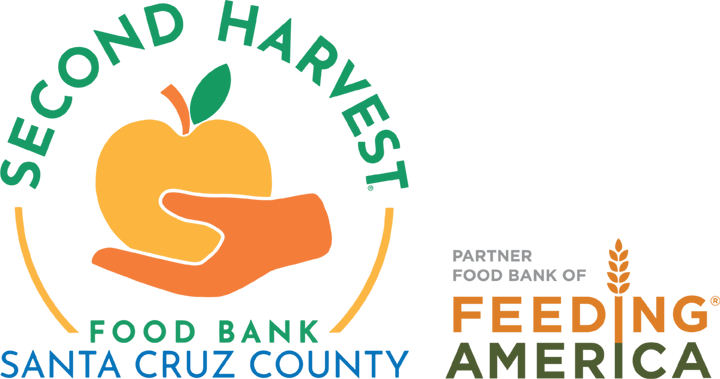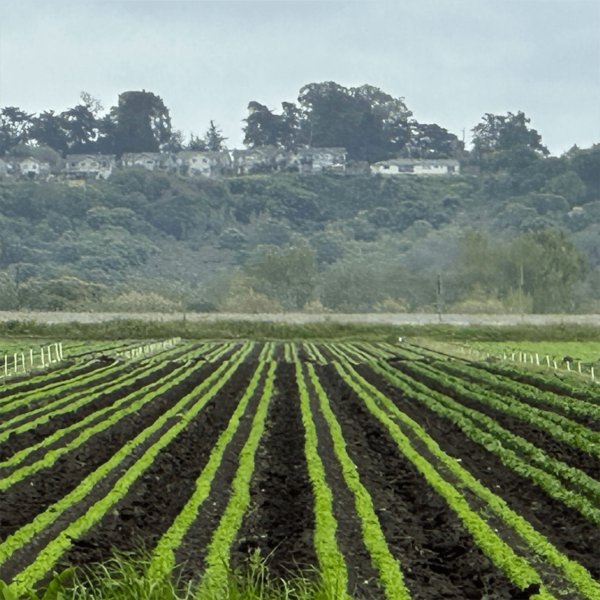Excerpt from Santa Cruz Sentinel
by Tara Fatemi Walker
The Food Bank’s goal is to ensure no one in Santa Cruz County goes without nutritious food. Thanks to community partners, The Food Bank nourishes 65,000 people monthly. Let’s get closer to some of the key people and farms who help make this possible.
Emily Freed, Second Harvest’s Supply Chain Director, works with agriculture partners to receive fresh produce donations. Labor, water, and the impacts of climate change on our local agricultural community regularly come up in conversation with these partners. “Farming is hard work, especially this year with the Atmospheric River Storms,” says Freed, who loves telling partners about the impact their donations make.
“Our community participants are incredibly grateful for the abundance of fresh produce. Together we are the Food Bank—including our clients and local farms—and we thrive because of our partners,” Food Bank CEO Erica Padilla-Chavez explains.
Lakeside Organics, led by owner/grower Dick Peixoto, has been donating produce to Second Harvest for 28 years—ever since Peixoto founded the business. Seasonal crops include broccoli, cauliflower, baby bok choy, and lettuce.
Lakeside Organics is happy to be a SHFB partner. “We believe in building a strong community. This comes back to us in a lot of different ways, i.e. better employees, better families. It benefits us all.” Lakeside Organics doesn’t have the infrastructure to facilitate local food distribution to those in need. “But The Food Bank does, and by collaborating with them, lots of produce is available to the community,” says Peixoto.
Driscoll’s has been a Second Harvest partner for 20-plus years. “Our partnership has consisted of berry donations, employee volunteering, event sponsorships, and grants to increase their capacity” says Nishan Moutafian, Driscoll’s VP, US, Baja & Canada Production.
Driscoll’s donates thousands of pounds of strawberries, raspberries, and blackberries to The Food Bank annually. During the offseason, they donate berries from other growing regions to support The Food Bank—including for emergency relief during natural disasters, like the flood in March.
It’s important to Driscoll’s to help community members in need. “Having been headquartered in Watsonville for five generations, this is our home,” says Moutafian. “Our vision is to grow in harmony with the communities we depend on and to be a good neighbor.” There are many reasons Driscoll’s partners with Second Harvest, including its history of excellence, “…not just in our community but in the state,” he adds. “They are California’s first food bank and one of the nation’s oldest. They are a trusted partner to the agriculture community and dozens of local non-profits.”
Mastronardi Produce donates millions of pounds of produce each year to food banks across North America, including Second Harvest—which it has donated to since 2020. Contributed crops include tomatoes, peppers, and cucumbers. “Because all our produce is greenhouse grown, we regularly have a supply of a variety of produce. We generally donate at least once per week,” says Ken Silveira, General Manager, Operations, Mastronardi Produce West.
“We believe it’s critical for everyone to have access to fresh, healthy fruits and vegetables,” says Silveira. In 2021, Mastronardi earned the Food Industry Donor of the Year award from Second Harvest.
Mastronardi is grateful to work with SHFB. “Together, we’re able to make a lasting impact,” Silveira says. “We appreciate that Second Harvest’s infrastructure and advocacy efforts are critical in helping Santa Cruz increase food security, especially in helping to provide access to fresh produce as a critical component of a healthy diet.”
There are tax benefits for agriculture partners when donating to SHFB or other food banks. As the California Association of Food Banks states, California growers donating California-grown fresh fruits or vegetables to a California food bank are eligible for a 10% tax credit. Partners can read more details on the cafoodbanks.org site.
Donations from partners are vital. “Agencies and our community members depend on consistent donations to make breakfast, pack lunches, provide snacks, and make dinner for their families,” says Freed. “Produce donations are key for nourishing meals. They allow our agencies and community members to experiment with produce they may not be familiar with. For example, one of our growers typically donates kale year-round which allows our nutrition team to create recipes for kale soups in the winter and kale salads in the summer.”
The Food Bank welcomes growers and producers to make donations whenever they can, even if it’s not on a regular schedule. Produce can be imperfectly shaped, or irregularly sized. To make a large-scale food donation, Second Harvest urges growers to contact the supply chain team at (831) 232-8222.
Article posted to special section of Santa Cruz Sentinel July 28, 2023

